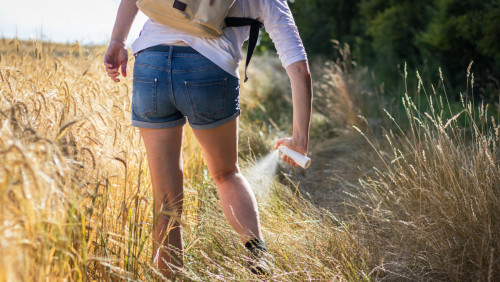English
Record Number of Infections in Norway. Mild Early Autumn to Blame

The threat from ticks increases as average temperatures rise during the autumn-winter season. Fot. Stock.adobe.com/licencja standardowa
For the first time, more than 100 cases of Lyme disease were registered in Norway in a single month this September. According to the Infectious Disease Surveillance System (MSIS), 106 infections were recorded, and from January to September 2025, there were a total of 488 cases. This is 29 more than in the same period last year.
Biologist Yvonne Kerlefsen from Flåttsenteret (Tick-Borne Disease Center) points out that the increase is small, but links it to a very warm summer and mild autumn. The center has received a surprisingly high number of reports in recent weeks, including through the Flåttsjekk app, where users report tick bites and rashes.
It was noted that the autumn travel and hunting season encourages people to spend more time outdoors. Ticks remain active when the weather is mild. This is especially noticeable along the coast, even at temperatures around 4–5 degrees Celsius.
It was noted that the autumn travel and hunting season encourages people to spend more time outdoors. Ticks remain active when the weather is mild. This is especially noticeable along the coast, even at temperatures around 4–5 degrees Celsius.
Lyme Disease and Tick-Borne Illnesses
Lyme disease is a bacterial infectious disease caused by spirochetes from the Borrelia burgdorferi sensu lato complex, transmitted mainly by ticks of the Ixodes genus. An early, characteristic skin symptom is erythema migrans, which gradually expands. Other tick-borne diseases include tick-borne encephalitis (TBE) – a viral disease of the central nervous system that can have a biphasic course.
Anaplasmosis (caused by Anaplasma phagocytophilum) usually presents with fever, muscle aches, leukopenia, and thrombocytopenia, and is treated with tetracycline antibiotics. Babesiosis (e.g., Babesia microti or B. divergens) is a parasitic blood disease with fever and hemolytic anemia, particularly severe in people without a spleen or with weakened immunity. In Europe, infections with Borrelia miyamotoi (so-called tick-borne relapsing fever) are also reported, as well as occasional rickettsioses, which may present with fever, rash, and a scab at the bite site.
Anaplasmosis (caused by Anaplasma phagocytophilum) usually presents with fever, muscle aches, leukopenia, and thrombocytopenia, and is treated with tetracycline antibiotics. Babesiosis (e.g., Babesia microti or B. divergens) is a parasitic blood disease with fever and hemolytic anemia, particularly severe in people without a spleen or with weakened immunity. In Europe, infections with Borrelia miyamotoi (so-called tick-borne relapsing fever) are also reported, as well as occasional rickettsioses, which may present with fever, rash, and a scab at the bite site.
Good weather is forecast for southern Norway in the coming days, which—combined with mild temperatures—encourages tick activity and increases the risk of bites. In this context, authorities remind people about the proper technique for removing ticks (pulling upward, not twisting) and the possibility of reporting bites and skin changes in the Flåttsjekk app.
Dodaj komentarz
Wyślij

